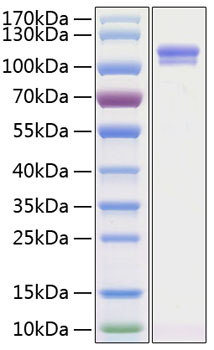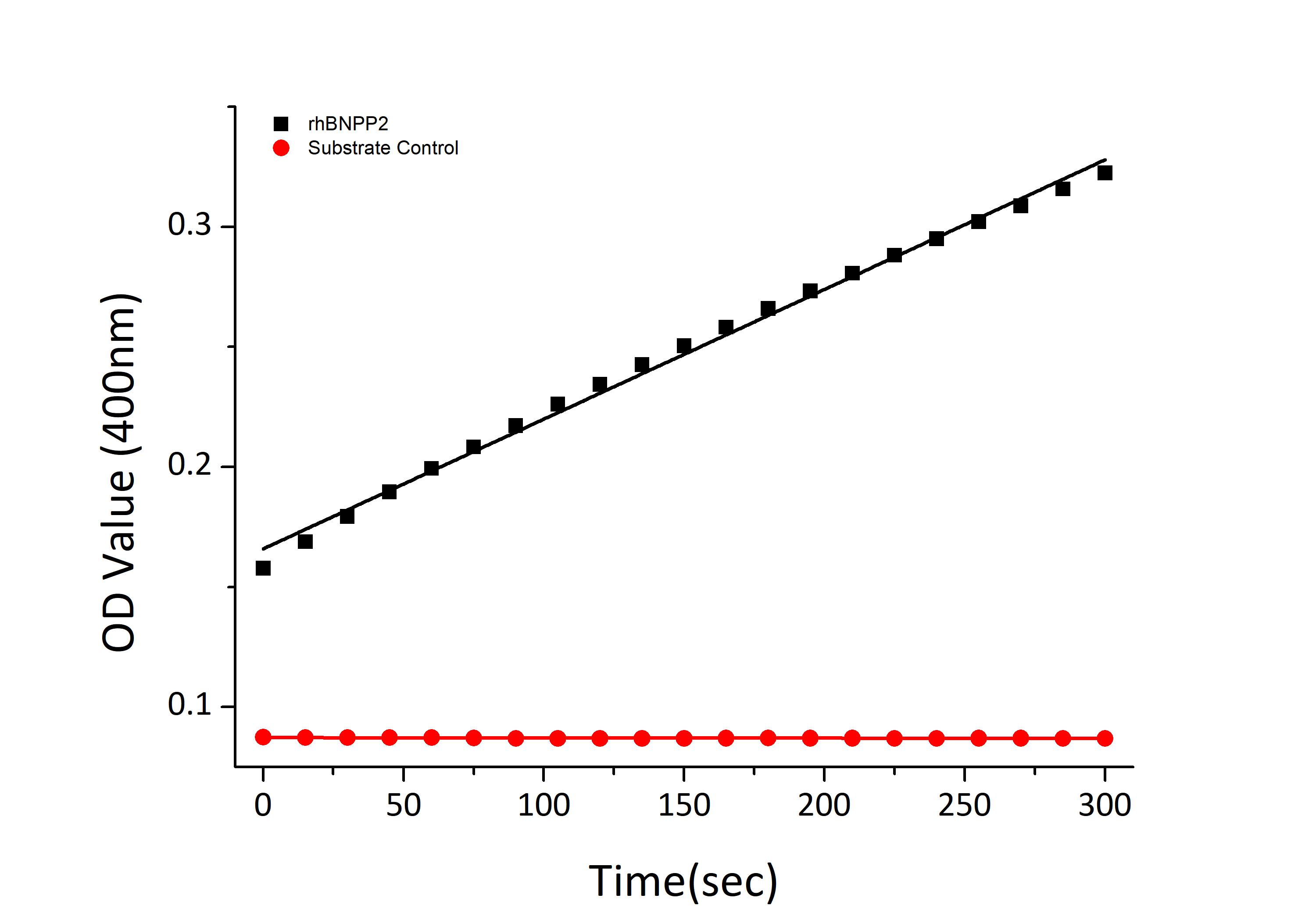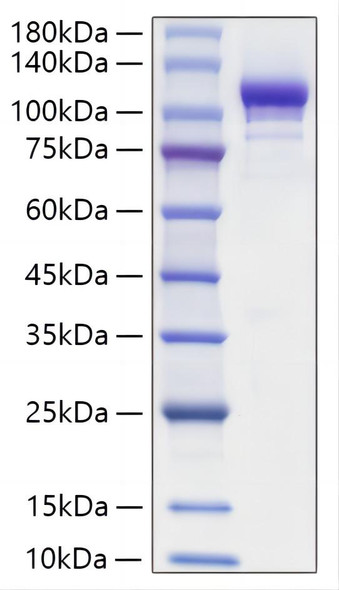Description
Recombinant Human Autotaxin/E-NPP2 Protein
The Recombinant Human Autotaxin/E-NPP2 Protein is a biologically active recombinant protein that plays a significant role in various cellular processes and signaling pathways in human biology. This protein is widely employed in immunological research, cell biology studies, protein-protein interaction analyses, and therapeutic development, providing researchers with a reliable tool for investigating Autotaxin/E-NPP2 function and its implications in health and disease.
This product (SKU: RPCB2109) is produced using HEK293 cells and features a N-His tag for convenient detection and purification. The protein exhibits a calculated molecular weight of 94.54 kDa with an observed molecular weight of 100-120 kDa under denaturing conditions, achieving ≥ 90 % as determined by SDS-PAGE.. Functional bioactivity has been validated through rigorous quality control assays, confirming its suitability for demanding research applications.
Key Features
| High Purity by Affinity Chromatography | |
| Mammalian & Bacterial Expression Systems | |
| High lot-to-lot consistency via strict QC |
| Product Name: | Recombinant Human Autotaxin/E-NPP2 Protein |
| SKU: | RPCB2109 |
| Size: | 10 μg , 20 μg , 50 μg , 100 μg |
| Reactivity: | Human |
| Synonyms: | ENPP2, ATX, ATX-X, AUTOTAXIN, LysoPLD, NPP2, PD-IALPHA, PDNP2 |
| Tag: | N-His |
| Expression Host: | HEK293 cells |
| Calculated MW: | 94.54 kDa |
| Observed MW: | 100-120 kDa |
| Gene ID: | 5168 |
| Protein Description: | High quality, high purity and low endotoxin recombinant Recombinant Human Autotaxin/E-NPP2 Protein (RPCB2109), tested reactivity in HEK293 cells and has been validated in SDS-PAGE.100% guaranteed. |
| Endotoxin: | < 1 EU/μg of the protein by LAL method. |
| Purity: | ≥ 90 % as determined by SDS-PAGE. |
| Formulation: | Lyophilized from a 0.2 μm filtered solution of 20mM PB, 150mM NaCl, pH 7.4.Contact us for customized product form or formulation. |
| Bio-Activity: | Measured by its ability to cleave Bis (p-Nitrophenyl) Phosphate (BPNPP). The specific activity is >15000 pmol/min/μg, as measured under the described conditions. |
| Reconstitution: | Centrifuge the tube before opening. Reconstitute to a concentration of 0.1-0.5 mg/mL in sterile distilled water. Avoid vortex or vigorously pipetting the protein. For long term storage, it is recommended to add a carrier protein or stablizer (e.g. 0.1% BSA, 5% HSA, 10% FBS or 5% Trehalose), and aliquot the reconstituted protein solution to minimize free-thaw cycles. |
| Storage: | Store at -20℃.Store the lyophilized protein at -20℃ to -80 ℃ up to 1 year from the date of receipt. After reconstitution, the protein solution is stable at -20℃ for 3 months, at 2-8℃ for up to 1 week. |
ENPP-2, also known as Autotaxin, belongs to the ectonucleotide pyrophosphatase/phosphodiesterase (NPP) family. Some NPPs hydrolyze phosphates from nucleotides and their derivatives. ENPP-2 shares 40 - 50% identity to ENPP1 & 3, all of which contain a N-terminal intracellular domain, a single transmembrane domain and a large extracellular domain that includes a catalytic domain, two somatomedin-B-like domains, and a C-terminal nuclease-like domain.Evidence shows LPA and sphingosine 1-phosphate to be specific inhibitors of ENPP-2. ENPP-2 was originally found to stimulate tumor cell motility and has since been found to enhance tumor invasion and metastasis and to be up-regulated in several types of carcinomas including breast and lung.








